
Las Vegas Mormon Fort
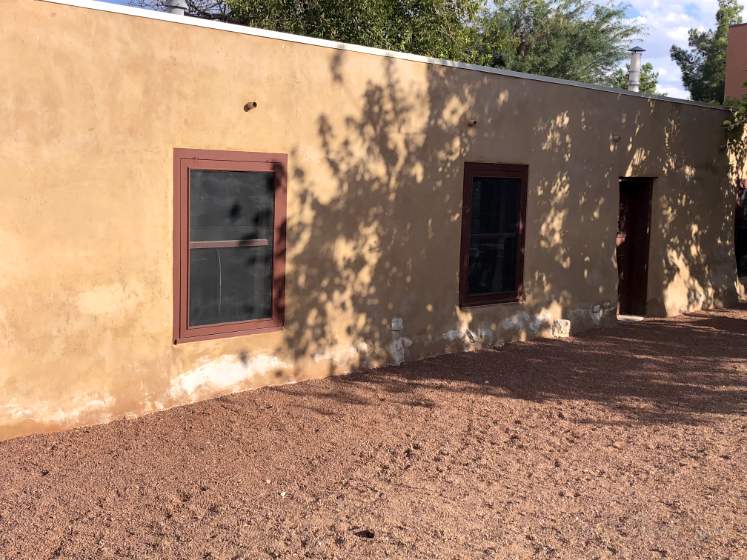
"The oldest building in Las Vegas, this structure served as a cement testing facility for the Bureau of Reclamation during the construction of Hoover Dam." (Nevada State Parks)
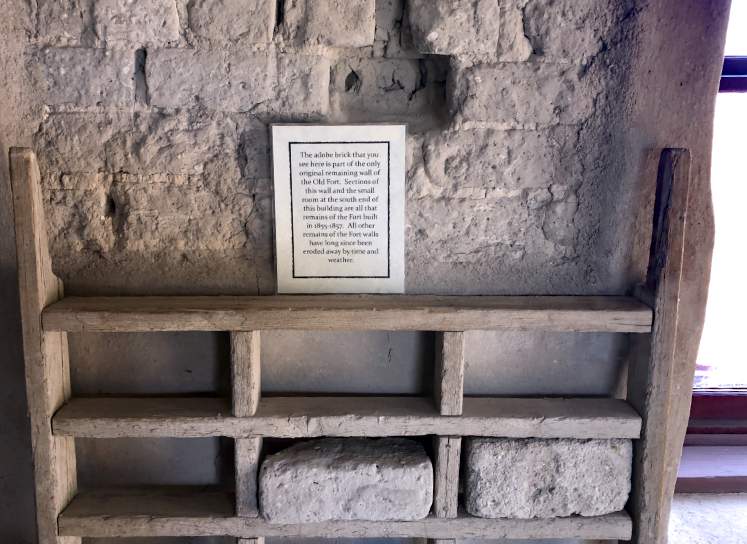
"The adobe brick that you see here is part of the only original remaining wall of the Old Fort. Sections of this wall and the small room at the south end of this building are all that remains of the Fort built in 1855-1857. All other remains of the Fort walls have long since been eroded away by time and weather." (Nevada State Parks)
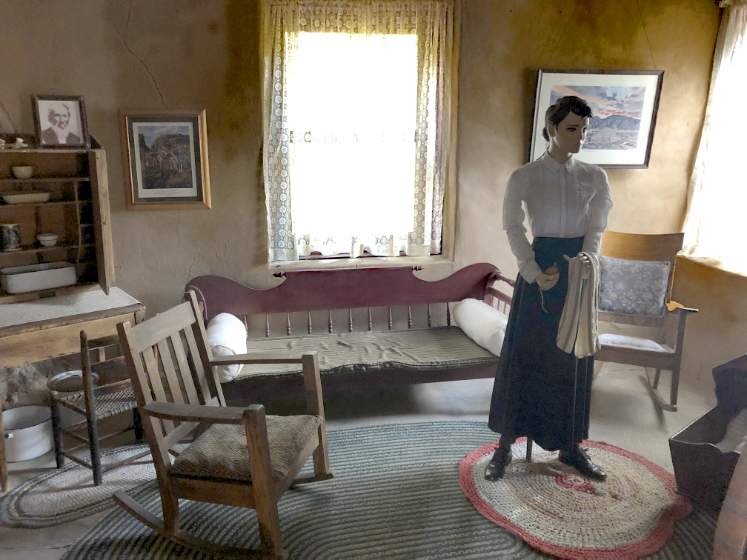
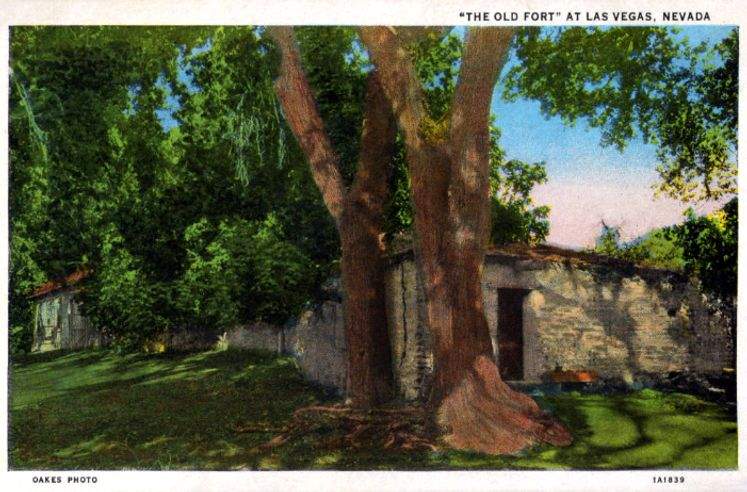
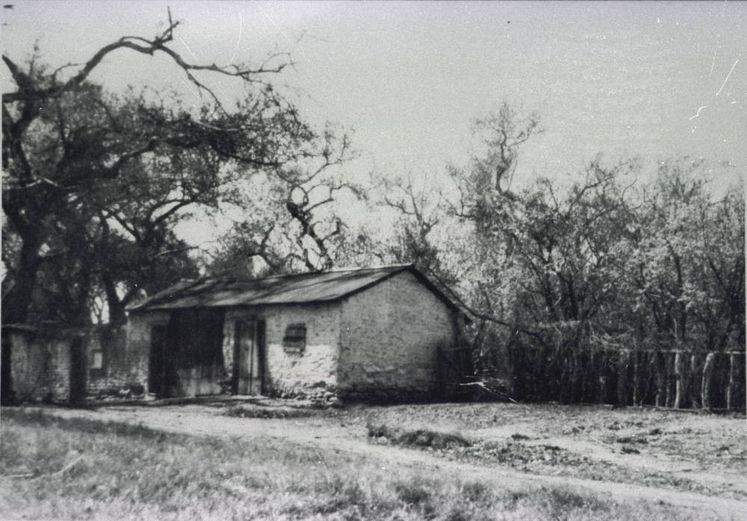
Photograph of buildings at the Mormon Fort, Las Vegas, Nevada, circa 1880. Elbert Edwards Photo Collection. UNLV Libraries Special Collections & Archives.
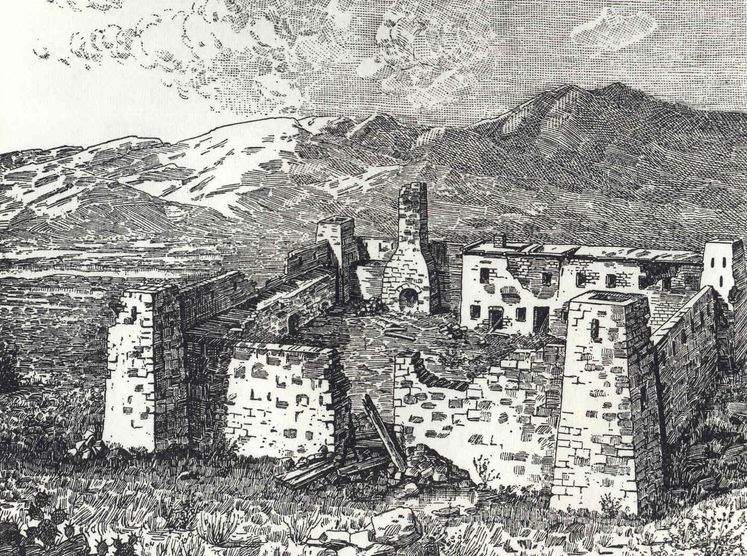
Illustration of the Mormon Fort by Thaddeus Stevens Kenderdine (1836-1922).
"Las Vegas had its beginning at this location on June 14, 1855, when thirty-two Mormon missionaries arrived from Utah under the leadership of William Bringhurst. They set to work establishing farm fields that summer, and began to build a 150-foot square adobe fort that September, enclosing eight two-story houses. They cultivated small gardens and fields, planted fruit and shade trees, and tried to convert the local Southern Paiutes.
Most of the Mormons departed in 1857, and by 1865, Octavius Decatur Gass began developing the Las Vegas Rancho, using the adobe structures as headquarters. He farmed and raised beef cattle, supplying travelers and miners in the Potosi region.
Helen J. Stewart, owner of the property from 1882 to 1902, expanded the ranch to 1,800 acres, which she sold to the San Pedro, Los Angeles & Salt Lake Railroad for the Las Vegas townsite. The Company auctioned the land on May 15, 1905, starting the process of building the Las Vegas around you today."
(Nevada Historical Marker 35)
"In April 1855, Brigham Young, President of The Church of Jesus Christ of Latter day Saints, called thirty men to leave their families and possessions in the recently settled towns of Utah to serve a mission at the Las Vegas Springs. The verdant meadows watered by the springs had been seasonally inhabited by the Paiute Indians for centuries. The water and the meadows made Las Vegas an important stop on the Spanish Trail (called the Mormon Road after 1848). President Young directed this group of newly called missionaries to become self-sufficient, to provide a place of rest and security for travelers between California and Salt Lake City, and to teach the Indians the gospel of Jesus Christ. In the heat of the summer, in June 1855, the missionaries arrived at this site. The mission, intended to be permanent, was the first Anglo-American settlement in Las Vegas Valley. By summer's end their irrigated gardens were producing fresh vegetables and grains. A new fort was under construction, and a spirit of cooperation and mutual learning was being established with the native inhabitants. They also discovered a deposit of lead ore in the nearby mountains. More missionaries were sent to smelt the complex ore in large quantities, but the attempt was unsuccessful. On 23 February 1857 Church leaders sent word to the settlement that the mission was to be disbanded. These early pioneers returned to Utah but left a legacy of faith, devotion, and service shown by their willingness to settle in this hostile environment."
(The Church of Jesus Christ of Latter-day Saints)
"After founding Salt Lake City in 1847, the Mormon Church expanded its settlement westward. The Las Vegas Mission was established in June 1855 as an outpost roughly halfway between Salt Lake City and Southern California. Built alongside the Las Vegas Creek, 30 missionaries constructed a 150 square foot adobe fort. This was the first non-native building and settlement in the Las Vegas Valley. A part of an original 1855 wall remains and is the oldest extant building remnant in Nevada. The Mormons taught new farming techniques and religion to the local Paiutes. Lead was discovered in the nearby mountain, but the mining effort proved unsuccessful. By 1857 the Mission was abandoned because of dissension among the leaders, the summer climate and a deteriorating relationship with the Paiutes. In 1865, Octavius D. Gass developed a ranch on the site and provided food for travelers and nearby mining communities. By 1881, the property passed to Archibald and Helen J. Stewart. Although Archibald was killed in a gunfight in 1884, Helen continued to operated the ranch, raising their five children and providing rest and comfort for travelers. In 1902 she sold the ranch, the surrounding land and the water rights to the San Pedro, Los Angeles and Salt Lake Railroad. On her former land in 1905, the new town of Las Vegas was born. In 1972 the Old Fort was placed on the National Register of Historic Places. The site is now part of the Nevada State Park System."
(Las Vegas Centennial Commission)
"The Old Fort is a remnant of the complex of adobe structures built by Mormon colonists in 1855-1856. It served as a ranch until the land was sold to the railroad in 1902. The story of the Fort reflects the growth of Las Vegas as its economy changed from ranching to railroading to gaming. The Old Fort is now the Old Las Vegas Mormon Fort State Historic Park, and is listed on the State and National Registers of Historic Places."
(Las Vegas Pioneer Trail Marker 15)
"In 1855 Pres. Brigham Young appointed a company of men under the leadership of William Bringhurst to establish a colony at Las Vegas. The company left Salt Lake May 10 and arrived at Las Vegas June 14, 1855 and camped near this site. William Bringhurst was appointed President, William. S. Covert and Ira S Miles, counselors. Sunday, June 17, they built a bowery and held their first religious services. The next day they began to build the fort, 150 feet square, with walls 14 feet high, 2 feet wide at base and 1 foot at top."
(Daughters of Utah Pioneers Marker 40)
"John Steele, one of the original L. D. S. missionaries, secured a mail grant for the Las Vegas Mission. The documents to establish the Post Office, and, appointing William Bringhurst Postmaster, were brought from Salt Lake City by Benjamin H Hulse, January 10, 1856. This office was continued until the mission was abandoned in 1857. Mr. Steele acted as postmaster under President Bringhurst."
(Daughters of Utah Pioneers Marker 170)
"Stretching for 130 miles across Clark County, this historic horse trail [Old Spanish Trail] became Nevada’s first route of commerce in 1829 when trade was initiated between Santa Fe and Los Angeles. The trail was later used by the wagons of the “49ers” and by Mormon pioneers. Concrete posts marking the trail were erected in 1965."
(Nevada Historical Marker 32)
"“It will only be for two years,” Archibald promised his wife Helen in 1882, coaxing her away form civilized Pioche, Nevada to a ranch in the middle of the desert. Two years later, Helen buried Archibald after he lost his life in a gunfight at the nearby Kiel Ranch. Helen stepped out of her traditional role as wife, mother, and homemaker, to take over the “LDS Vegas Rancho”. Helen never looked back. She expanded the ranch to nearly 2000 acres, and became one of the largest property owners in the Las Vegas Valley. Helen sold 1835 acres of her property to the San Pedro, Los Angeles, and Salt Lake Railroad in 1902 for $55,000. She kept some land for herself and donated 10 acres to the local Paiute tribe. Helen was indeed a woman of “Firsts” – first postmaster in the valley – first woman in Las Vegas to serve on a jury – first woman to serve on the Clark County school board. As a founding member of the local Christ Episcopal Church and the Mesquite Club, and a Red Cross Activist, Helen shaped early Las Vegas into a vibrant community. Local leaders shut down the city of Las Vegas during Helen’s funeral in honor of her pioneering spirit."
(Nevada State Parks)
Listed on the National Register of Historic Places in 1972.
Listed on the National Register of Historic Places in 1978 (boundary increase).
Listed on the Nevada State Register of Historic Places in 1981.
Located in the Historic Cultural Corridor.
Located at 500 East Washington Avenue, Las Vegas, Nevada.